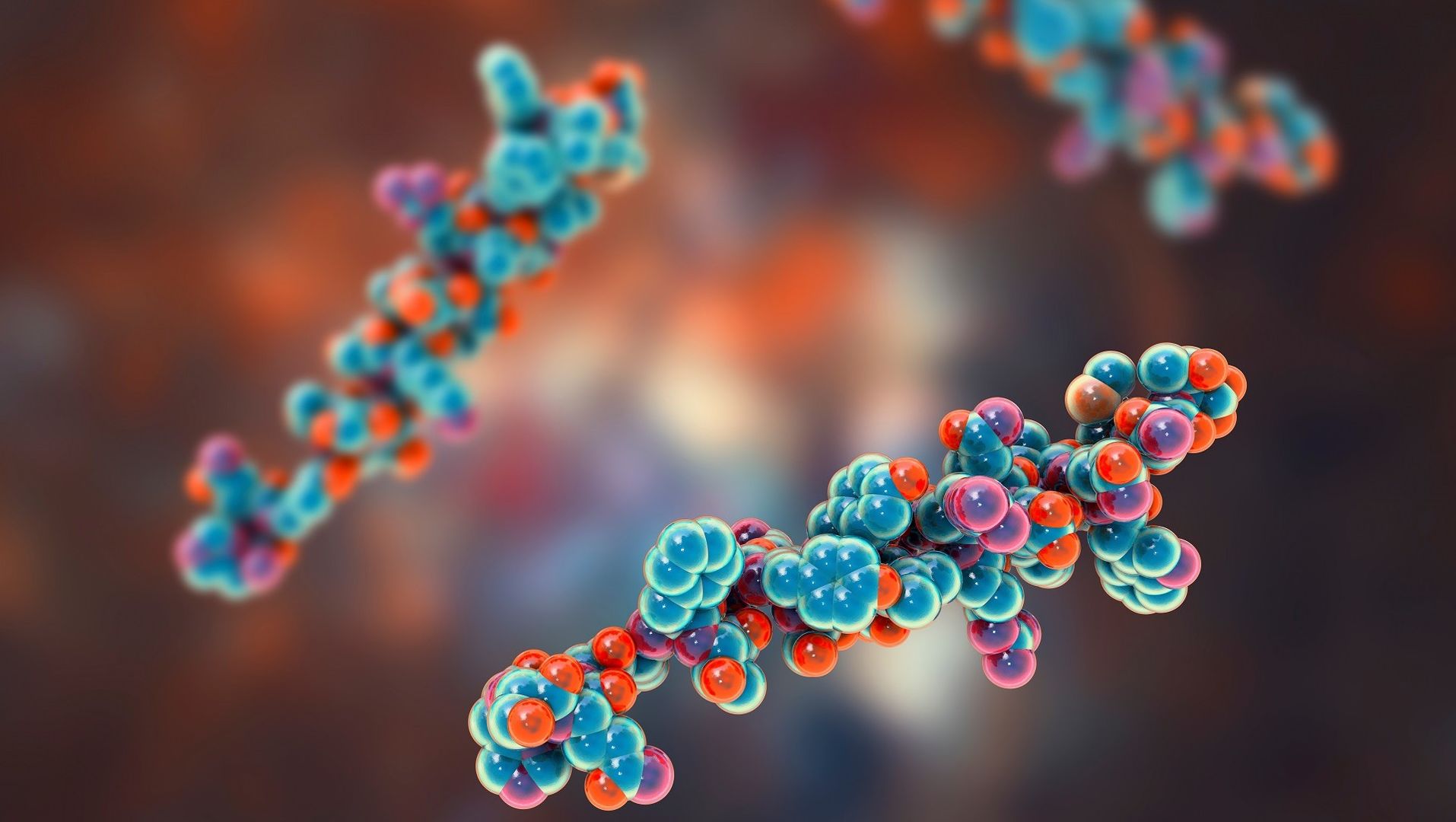As expert in protein structure analysis, Creative Proteomics understands the critical role played by disulfide bonds in peptides. Our cutting-edge service aims to provide accurate and comprehensive analysis, enabling you to gain deeper insights into the disulfide bond profiles of your peptides.
Why Is Disulfide Bond Quantitative Analysis Important?
Many natural peptides contain disulfide bonds, such as various growth factors (Zesławski, W.; et al. 2001) and peptide hormones produced by the endocrine system such as insulin. The correct formation of disulfide bonds is crucial to the stability and activity of these polypeptides. Therefore, quantitative analysis of disulfide bonds is of great value for studying their structure and function and quality control.
 Structure of Insulin-like Growth Factors-I (PDB ID: 1H59) (Zesławski, W.; et al. 2001)
Structure of Insulin-like Growth Factors-I (PDB ID: 1H59) (Zesławski, W.; et al. 2001)
Sample Requirements for Peptide Disulfide Bond Quantitative Analysis
- Samples should be as pure as possible and free of contaminants to ensure that disulfide bonds are in their native state.
- Plant tissue samples should be at least 200 mg, blood samples should be at least 1 ml (plasma should be prevented with EDTA), serum 0.2-0.5 ml, urine 2 ml, animal tissue samples should be at least 1 g, and cell samples should be 107 cells.
- If you provide peptide samples, please ensure that the total amount of peptides is above 100 μg.
How to Perform Disulfide Bonds Quantitative Analysis?
Ellman's Reagent Method
We can perform quantitative analysis by measuring the thiol ions released from the sulfur atoms in the disulfide bonds. The method is simple and intuitive and applicable to both in vitro and in vivo samples. However, Ellman's reagent method has certain limitations for the analysis of complex samples and low-concentration disulfide bonds.
Mass Spectrometry (MS)
MS emerges as a pivotal tool for quantitative analysis of disulfide bonds, playing a vital role in peptide research. At Creative Proteomics, we harness the power of MS, combined with cutting-edge separation technologies like chromatography, to achieve precise identification and quantitative analysis of disulfide bonds in peptide samples. By leveraging the advantages of high sensitivity, resolution, and accuracy offered by mass spectrometry, we enable comprehensive analysis of complex samples and low-concentration disulfide bond studies.
Antibody Probe Method
Another innovative approach to quantifying disulfide bonds is through disulfide bond-specific antibodies, capitalizing on immunology-based strategies. Our method involves employing specific antibodies that selectively bind to disulfide bonds, enabling quantitative analysis by detecting the resulting antibody-disulfide bond complexes. Leveraging the high selectivity and sensitivity of disulfide bond-specific antibodies, we can accurately assess disulfide bond content in complex samples.
Process Overview: Unlocking the Secrets of Disulfide Bonds
Our comprehensive service employs advanced techniques to quantitatively analyze disulfide bonds in peptides. The process encompasses the following crucial steps:
Careful preparation of peptide samples is paramount, ensuring optimal solubility and purity. This meticulous step sets the foundation for obtaining accurate results during subsequent analysis.
Disulfide Bond Reduction
The prepared samples undergo controlled reduction of disulfide bonds. By introducing a reducing agent, we break the disulfide bonds and generate reduced forms of the peptides.
Quantitative Analysis
Employing state-of-the-art mass spectrometry and chromatography techniques, we perform precise quantitative analysis of the reduced forms of peptides. This approach offers high sensitivity and specificity, facilitating the detection and quantification of disulfide bonds, even at low concentrations.
Advantages of Our Peptide Disulfide Bond Quantitative Analysis
By utilizing our advanced analytical techniques, our peptide disulfide bond quantitative Analysis Service offers a range of advantages.
- Accurate Quantification
- Comprehensive Analysis
- High Sensitivity and Specificity
Creative Proteomics offers a cutting-edge solution to gain a comprehensive understanding of the disulfide bond profiles in peptides. Through our accurate and quantitative analysis, you can optimize peptide design, advance drug development, and ensure quality control. Trust our expertise and state-of-the-art techniques to unlock the full potential of your peptides.
Contact us today to learn more about our Peptide Disulfide Bond Quantitative Analysis Service and discover how it can benefit your peptide research and development endeavors.
Reference
- Zesławski, W.; et al. The interaction of insulin-like growth factor-I with the N-terminal domain of IGFBP-5. EMBO J. 2001, 20(14):3638-44.
* For research use only. Not for use in diagnostic procedures!
Our customer service representatives are available 24 hours a day, 7 days a week.


 Structure of Insulin-like Growth Factors-I (PDB ID: 1H59) (Zesławski, W.; et al. 2001)
Structure of Insulin-like Growth Factors-I (PDB ID: 1H59) (Zesławski, W.; et al. 2001)